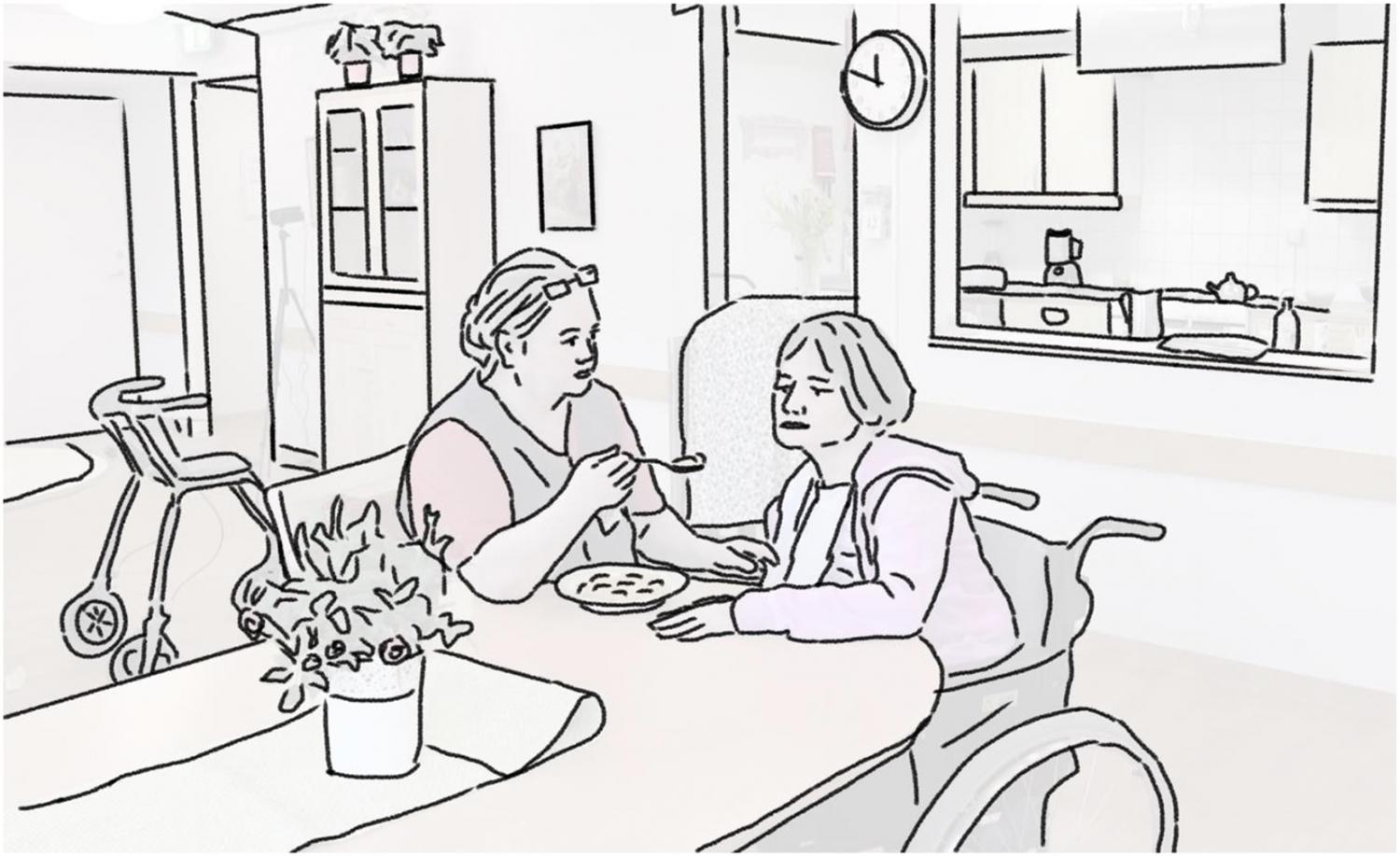
In this article, we argue that investigating and learning about agentive abilities of people living with late-stage dementia requires a theoretical framework that focuses on the use of bodily resources in interpersonal interaction (i.e., intercorporeality) for performing joint activities rather than on solely the use of spoken language. Assisted eating, which involves people living with late-stage dementia and professional carers, is taken as an empirical example. The study is based on observations and video recordings of occasions of assisted eating involving five people with late-stage dementia in a residential elder care home; one of these people is used as an example in this paper. The analysis shows that assisted eating is performed as a joint intercorporeal activity. The participants create joint attentional space and a common space of action for their bodily movements when they give and receive food. The participants engaged in the activity coordinate their bodily moves with each other. The analysis (1) demonstrates that the collaboration between people living with late-stage dementia and nurses is based on practical interdependent and co-operative bodily actions. (2) This makes it possible to better understand agency in terms of intercorporeal interaction displayed by people living with late-stage dementia. (3) The agency demonstrated in intercorporeal interaction is thus considered to be shared and distributed across bodies and requires support to be interactionally achieved. (4) The intercorporeal interaction as grounds for agency not only calls on other participants to note and honor the agency of the person with dementia that is still evident in embodied interaction, but also invites others to support people with dementia to claim and display their agency in social interactions and joint activities.
